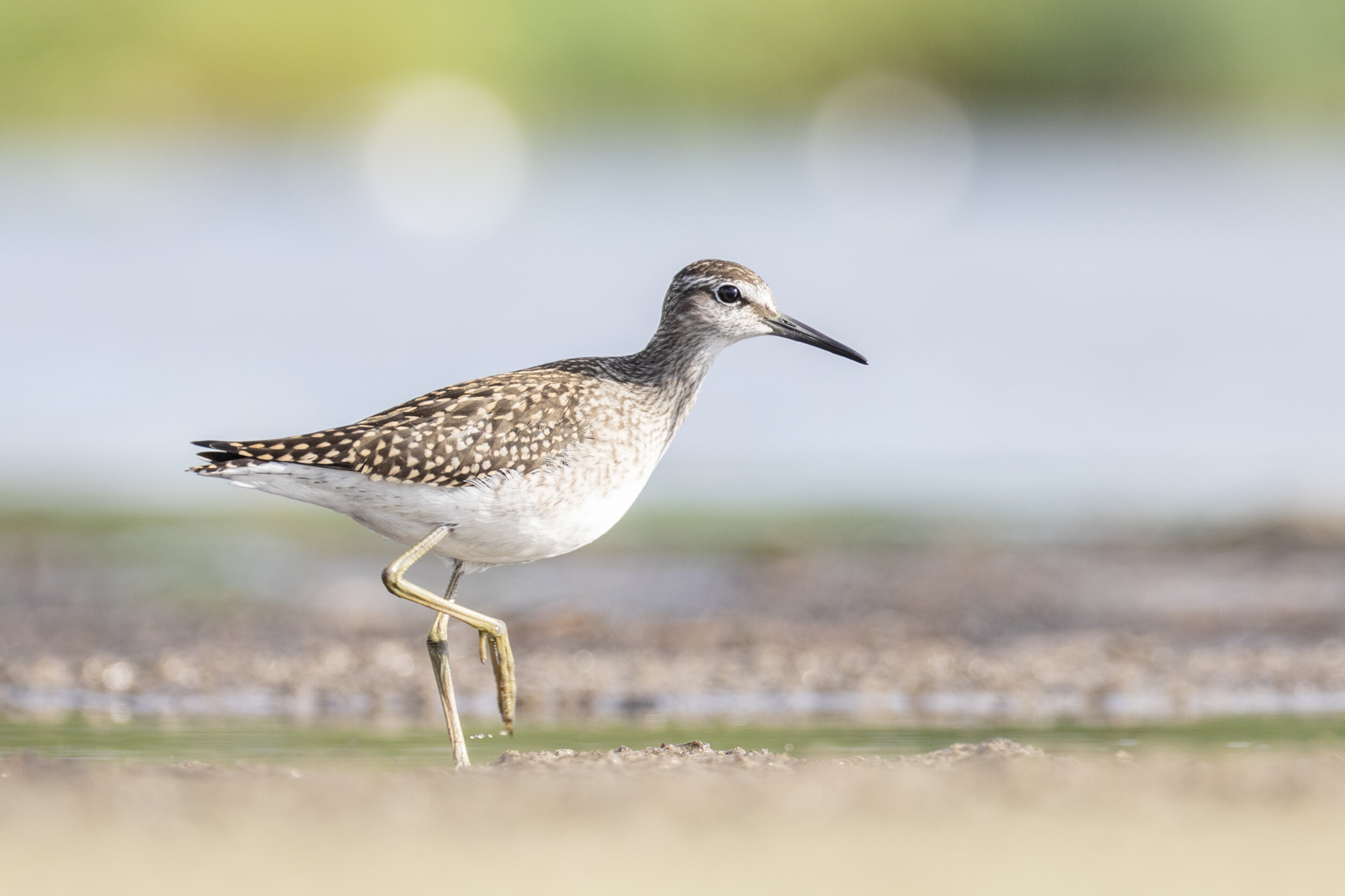Wood sandpiper
- Wood sandpiper
- https://linnuriik.ee/wp-content/uploads/2021/09/Mudatilder4-Kauro-Kuik-1024x682.jpg
- Keemu linnud
- https://linnuriik.ee/wp-content/uploads/2021/09/mudatilder_salvestusVRunnel.mp3
Wood sandpiper. Photo: Kauro Kuik
Introduction
Latin Tringa glareola
Estonian Mudatilder
Also known as: no known names
Status in Estonia
Breeding and migratory bird.
Description
Similar to the green sandpiper but lighter brown in appearance, with larger spots on the top side, longer legs, a narrow-striped tail and sparse stripes on the chest and sides. A pale brow stripe extends behind the eye and the legs are yellowish-green. In flight, the wings’ pale undersides are visible and the toes extend entirely past the tip of the tail. In the summer, the top part of the adult bird is irregularly marked with little white and cream spots, whereas in the winter, the plumage is greyer and more uniform.
Size
Body length 18.5–21 cm, wingspan 35–39 cm, body mass 50–70 g.
Similar species
Common greenshank, marsh sandpiper, common sandpiper, green sandpiper, common redshank.
Distribution
The wood sandpiper breeds in the Eurasian forest tundra and taiga zone. The breeding area spans over 10 million square kilometres, extending from Scotland to Kamchatka. It is mostly found in Fennoscandia and forest zone bogs around the Baltic Sea in the western portion of its distribution area. Individual couples have been observed nesting in blanket bog ponds in Scotland, Denmark and Northern Germany. The distribution in Estonia varies based on the distribution of bogs and transition mire.
Population
Estonia has 2000–3000 breeding pairs.
Occurrence in Estonia
The first wood sandpipers usually arrive in Estonia by the end of March and in early April. The spring migration moves fast across a wide front until the end of May, without longer stops or the formation of stopover flocks. The migration of young birds along the coast begins in late July or early August and lasts until the second half of September.
Diet
It mainly eats insects and worms, but also seeds, fish and small frogs.
Habitat
It lives in raised bogs and transition mires and to a lesser extent in fens. It is mostly found around bodies of water in raised bogs, wet transition mire strips, open floodplains of bog streams and floating mats of fens.
Nesting
The nest is built in a sedge, a twig pile, or a willow bush along the shore of a small lake or stream. In May, the female lays four pale blue, dark-spotted eggs, which the adult birds incubate for 22–23 days. The chicks are usually left in the care of the other parent once one of the parents departs after hatching. As a result, you may see the autumn migration of adult wood sandpipers as early as the second half of June as they migrate to the Mediterranean to moult. When the chicks reach flight age at 29–31 days old, the entire nest leaves the nesting site and gathers on wet beach meadows, polders and shallow shore areas of freshwater bodies.
Conservation status and protection
It belongs to the protected species of category III. Main threats come from the drying out and draining of its habitats in nesting areas (bogs drained for forestry and peat extraction), migration stopover areas (temporarily flooded coastal areas of water bodies) and wintering areas (rapid climate changes and frequent droughts in Africa).
Distribution and population in Lääne County
The wood sandpiper is a common migrant in the wetlands of Lääne County and an uncommon breeder in the bogs here. The wood sandpiper can be seen in numerous locations near Matsalu and Haapsalu bays. Migrating wood sandpipers mostly stop on the coasts of Põgari-Sassi and Haeska.
Nesting wood sandpipers can be seen on the hiking trails of Tuhu bog or Marimetsa bog.
